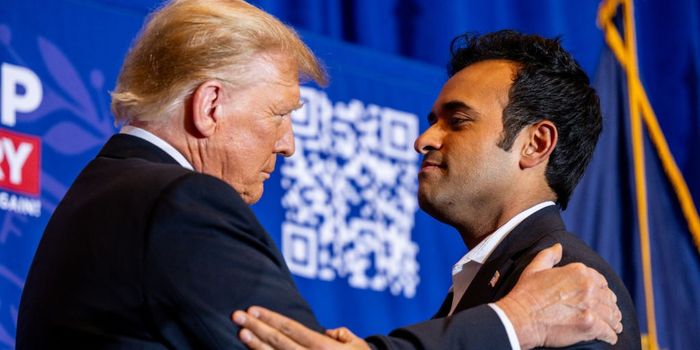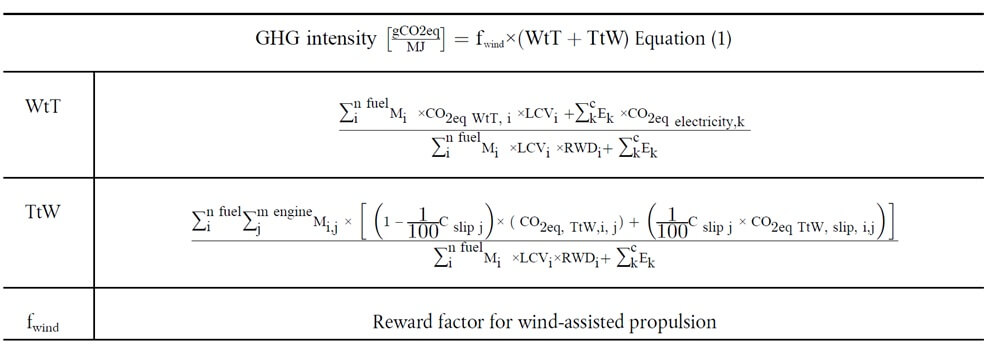Jeff Ruch
Nov 23, 2024
This week, Elon Musk and Vivek Ramaswamy, the co-directors of a non-existent Department of Government Efficiency (or DOGE), authored a Wall Street Journalop-ed outlining their vision for restructuring the entire federal government. The piece, entitled “The DOGE Plan to Reform Government," is notable for the combination of its breadth in scope and utter cluelessness.
As a key point, the duo decries “millions of unelected, unappointed civil servants” within an “ever-growing bureaucracy [which] represents an existential threat to our republic.” In fact, there are currently a total of less than 3 million federal civilian employees. This workforce is smaller than the same total in 1990. It is also smaller than the federal civilian workforce at the end of World War II, some 80 years ago.
Contrary to the impression that federal employment is spiraling out of control, overall, the total federal workforce has remained largely static, despite steady population growth over the decades. In addition, well more than one-third of all federal civilian employees now work in just three agencies: Defense, Veterans Affairs, and Homeland Security. These departments are hardly hotbeds of what they are calling “illicit regulations.”
Their assumption, prior to any analysis, is that thousands of federal workers should be fired. Their thesis does not allow for the possibility that some federal agencies are significantly understaffed. Also unmentioned are government contractor jobs, such as those at Musk’s Space X, estimated to number well more than double the total of all federal civilian employees who are supposed to manage this ever-growing stream of funding with fewer people.
To guide these reductions, they propose that the “number of federal employees to cut should be at least proportionate to the number of federal regulations that are nullified.” What, if anything, does that mean for agencies such as the National Park Service, Social Security Administration, or the State Department—agencies with big workforces but little regulatory footprint?
Contrary to the impression that federal employment is spiraling out of control, overall, the total federal workforce has remained largely static, despite steady population growth over the decades.
Even more striking is that these two themselves concede they do not have any concrete idea of what needs to be changed. That is because, as they profess, they are “entrepreneurs” with no expertise in this field. Instead, this effort will rely upon a yet-to-be-assembled “lean team of small-government crusaders, including some of the sharpest technical and legal minds in America.”
Presumably, these "sharpest minds" will want to be paid a salary commensurate with their market value. Consequently, this hiring spree would be a curious first step in an effort to cut costs and reduce federal payrolls.
Despite pledging to cutback agency staffing, Musk and Ramaswamy say they will be working “with experts embedded in government agencies, aided by advanced technology” to compile a “list of regulations” for President Trump to suspend enforcement or “initiate the process for review and rescission.” Notably, these embedded, apparently otherwise unoccupied “experts” resemble the very people this duo wants to fire on day one.
Moreover, the idea that “advanced technology” would serve as a magic wand to analyze the need for regulations sounds somewhat fanciful. Presumably, in this world of regulation by chatbots, AI would need a detailed orientation before being effectively unleashed government-wide.

Republican presidential candidate, former U.S. President Donald Trump greets U.S. entrepreneur Vivek Ramaswamy while speaking during a campaign rally at the Atkinson Country Club on January 16, 2024 in Atkinson, New Hampshire. (Photo by Brandon Bell/Getty Image)
Perhaps the most eyebrow-raising part of their essay is their vow to stand up to the “entrenched interests in Washington” who benefit from unjustified government largesse. Yet, one of the most favored special interests, in terms of billions in subsidies consumed, is the oil and gas industry. This is the same industry that Candidate Trump has promised behind closed doors to protect in return for their campaign contributions. This is one promise he can be expected to keep.
In addition, despite portraying themselves as disinterested “volunteers” guided only by the U.S. Constitution as their "North Star," Mr. Musk has substantial business dealings with the federal government. Presumably, the billions NASA spends on Space X contracts will be spared DOGE's harshest scrutiny.
One of the very few specific examples the pair cites is the nearly trillion-dollar Pentagon, which cannot pass an agency-wide audit. However, to manage this fiscal behemoth, President-elect Trump has tapped Pete Hegseth, a person with no discernible management experience whatsoever.
Nor is it a promising sign that the House of Representatives is creating a new subcommittee to liaison with DOGE to be headed by one Marjorie Taylor Greene. This would appear to illustrate the widely held belief that cluelessness is not a quality improved by doubling down.''
Our work is licensed under Creative Commons (CC BY-NC-ND 3.0). Feel free to republish and share widely.
Jeff Ruch is the former Executive Director of Public Employees for Environmental Responsibility (PEER) and now serves as its Pacific Director.
Full Bio >
Elon Musk wants to slash trillions in “waste.” Good luck, buddy!
by Dylan Matthews

US President-elect Donald Trump and Elon Musk watch the launch of the sixth test flight of the SpaceX Starship rocket on November 19, 2024, in Brownsville, Texas.
Two. Trillion. Dollars.
That’s how much Elon Musk, co-chair of President-elect Donald Trump’s new “Department of Government Efficiency,” or DOGE, has said he can cut out of the annual federal budget. Musk and his partner Vivek Ramaswamy have suggested that they can achieve this through “mass head-count reductions across the federal bureaucracy,” by cracking down on spending “unauthorized” by Congress, and “large-scale audits” of federal contracts. Their target wouldn’t be entitlement programs “like Medicare and Medicaid,” they say, but “waste, fraud, and abuse that nearly all taxpayers wish to end.”
If you could actually cut this much, it would wipe out the US’s $1.9 trillion deficit and put the country into surplus for the first time since the 2001 fiscal year. But let’s be clear: There is no way in hell Musk and Ramaswamy are going to be able to identify $2 trillion in annual spending to cut, and they certainly will not get anywhere near that number without congressional action.
To see why, consult this simple chart of projected federal spending in fiscal year 2025, which began on October 1:
I’m using the current fiscal year, but you’ll see something similar in any given year. The biggest single program is Social Security (which I’ve grouped here with its companion program, Supplemental Security Income). Trump has promised he will not cut 1 cent from Social Security, so that’s roughly $1.6 trillion out of the $7 trillion budget off the table.
The next-largest is interest payments on federal debt, accumulated from prior deficits. Musk’s America PAC has bafflingly listed this as a form of government waste, but failing to pay interest on past debt would constitute a US default and likely lead to a national, and probably global, financial crisis and recession. While we can reduce future deficits and pay less interest in the future, we’re obligated to pay interest on debt we’ve already accumulated.
So there’s nothing to save here either. Already we’ve ruled out over a third of total spending.
Next up is defense spending. Musk and Ramaswamy highlighted wasteful Pentagon spending in their Wall Street Journal op-ed, so this money could face some cuts. But Trump massively increased defense spending in his first years in office, and his congressional allies, like incoming Senate Armed Services chair Roger Wicker (R-MS), have proposed trillions in additional spending to counter China. Trump’s attitude toward the defense budget, as with his attitude on so many things, vacillated wildly during his first term, so perhaps he will side with Musk and Ramaswamy and seek to lower defense spending. But that’s far from guaranteed.
If defense spending is off the table, we’ve ruled out more than half the budget.
So what would they likely cut? They might look first to Medicare and Medicaid, which are responsible for over $1.5 trillion. Musk and Ramaswamy insisted that these are not their targets, but it’s hard to see how they’d avoid that. For one thing, there are places where Medicare in particular overspends where policymakers in both parties want to crack down; its practice of paying more for care in hospitals than at smaller facilities is a prime example. For another, Trump proposed massive cuts to Medicaid last term.
Then there’s non-defense discretionary spending, a grab-bag category that includes all spending authorized through annual appropriations bills rather than mandated by other legislation. The biggest category is transportation, which pays for things like air traffic control and national highways. Next up is veterans’ care and benefits. Support for science, public health/research, law enforcement, and education (including federal support for K–12 schools) each receive around or a little over $100 billion annually. This category has been cut to the bone since the 2010s as it is, and it’s hard to imagine Musk and Ramaswamy going up against veterans or cops.
Finally, there’s other mandatory spending, not broken out in the above chart but including a wide array of safety net programs:
Huge chunks of this feel politically and practically off-limits. Military retirement and veterans’ benefits (which fall under both the non-defense discretionary and mandatory parts of the budget) seem politically impossible to cut, and even civilian employee retirements would be difficult to cut back given that employees have paid into those accounts themselves for years.
The Children’s Health Insurance Program and foster care have long enjoyed bipartisan support. Trump and JD Vance have proposed expanding the child tax credit, making savings there unlikely.
That leaves programs like food stamps, the Affordable Care Act health insurance credits, and unemployment insurance.
Let’s suppose that Musk and Ramaswamy decide to really go for it. They’re going to cut non-defense discretionary spending in half, maybe by shutting down all scientific and health research and K–12 school aid. They’re slashing Medicare and Medicaid by a quarter, and they’re eliminating food stamps, ACA credits, and unemployment insurance entirely. These, to be clear, are all cuts that would require congressional approval and that Musk, Ramaswamy, and Trump could not achieve through executive action alone. Furthermore, they’re cuts that seem politically impossible to push through. For the sake of argument, let’s suppose this is the package.
Doing the math, even this unbelievably ambitious package would amount to a little over $1.1 trillion annually. It’s barely halfway to Musk’s stated goal.
The notion that the federal government is hopelessly bloated due to waste that every reasonable person wants to eliminate is an appealing myth, but it’s a myth. Government spending overwhelmingly goes to wildly popular programs like Social Security, Medicare, Medicaid, veterans’ benefits, and the defense budget. You can’t make much of a dent in it without touching those areas, and once you touch them, you’re going to get immense backlash.

Dylan Matthews is a senior correspondent and head writer for Vox’s Future Perfect section and has worked at Vox since 2014. He is particularly interested in global health and pandemic prevention, anti-poverty efforts, economic policy and theory, and conflicts about the right way to do philanthropy.
Critics argue that these plans will erode social safety nets, undermine public services, and disproportionately benefit corporate interests.

President-elect Donald Trump’s proposed Department of Government Efficiency (DOGE), led by Elon Musk and Vivek Ramaswamy, has unveiled an ambitious blueprint to overhaul federal operations through sweeping deregulation, mass firings, and severe spending cuts. Critics argue that these plans will erode social safety nets, undermine public services, and disproportionately benefit corporate interests.
Despite its name, DOGE is not a formal federal department but an advisory commission. It lacks direct legal authority but wields considerable influence under the stewardship of two high-profile Trump allies. Musk, the billionaire CEO of Tesla, and Ramaswamy, a biotech entrepreneur and former presidential candidate, aim to push through sweeping reforms aligned with small-government ideals.
Musk and Ramaswamy’s stated goal is to cut government inefficiencies and reduce federal oversight. They have pledged to recruit “super high-IQ small-government revolutionaries” to lead the charge. However, watchdog groups warn that DOGE’s agenda serves as a vehicle to dismantle federal protections while advancing corporate interests, including Musk’s own business ventures.
Musk and Ramaswamy outlined their vision in a Wall Street Journal op-ed, highlighting three key strategies: mass reductions in federal workforce, regulatory rescissions, and cuts to federal spending.
DOGE’s first priority involves significant downsizing of the federal workforce, with staff reductions tied to the elimination of regulations. “Not only are fewer employees required to enforce fewer regulations, but the agency would produce fewer regulations once its scope of authority is properly limited,” the op-ed reads.
Supreme Court rulings like West Virginia v. EPA and Collins v. Yellen are cited as legal precedents to justify the layoffs. The commission also proposes reinstating in-person work requirements, predicting that such mandates would prompt voluntary resignations among federal employees. “If federal employees don’t want to show up, American taxpayers shouldn’t pay them for the Covid-era privilege of staying home,” Musk and Ramaswamy wrote.
Critics, however, warn that these cuts would cripple federal agencies’ ability to enforce laws and deliver essential services. Public Citizen co-president Robert Weissman described DOGE’s plan as “a multipronged attack on any institution that seeks to constrain big business.”
The commission aims to dismantle thousands of federal regulations, targeting what it describes as “rules crafted by unelected bureaucrats.” Musk and Ramaswamy argue that the president has the executive power to nullify these regulations unilaterally.
DOGE plans to embed legal experts within federal agencies to review existing regulations and recommend rescissions. Environmental protections, labor laws, and financial oversight are likely to be among the first targets. Critics argue that this deregulation benefits corporate entities, including Musk’s companies, which face scrutiny from multiple federal agencies for alleged violations of labor and safety laws.
DOGE also proposes significant cuts to federal spending, targeting over $516 billion in programs classified as “unauthorized.” These include veterans’ healthcare, education funding, housing assistance, and childcare programs. The commission specifically named Planned Parenthood and the Corporation for Public Broadcasting as examples of organizations that would lose funding.
In their op-ed, Musk and Ramaswamy suggested using executive authority to bypass congressional restrictions and redirect funds. They claimed these measures would address federal overspending, but critics argue that such cuts disproportionately harm vulnerable communities.
Watchdog groups have raised concerns about the potential conflicts of interest inherent in Musk’s leadership. Tesla, SpaceX, and other Musk ventures could directly benefit from reduced federal oversight and compliance costs. “Based on Elon Musk’s comments, the so-called Department of Government Efficiency is poised to make far-reaching recommendations that could have a devastating impact on Americans and enormously benefit insiders, starting with Musk himself,” Weissman said.
Beyond Musk’s personal interests, DOGE’s proposals align with a broader GOP agenda to prioritize corporate profits over public welfare. The dismantling of regulatory safeguards risks creating an environment where big business operates with little accountability.
Ramaswamy’s praise for Argentine President Javier Milei’s economic policies has drawn attention. Milei’s austerity measures have slashed social safety nets while cutting taxes for the wealthiest citizens, leading to a dramatic increase in poverty. Ramaswamy’s tweet describing DOGE’s proposals as “Milei-style cuts, on steroids” underscores the potential for similar outcomes in the United States.
Casey Wetherbee, writing for Jacobin, warned that DOGE’s recommendations could cause “temporary hardship” for American workers while benefiting the nation’s wealthiest. “DOGE’s relationship with the Trump administration could flame out spectacularly,” Wetherbee wrote, but not before significant damage is done.
Progressive lawmakers and advocacy groups have voiced strong opposition to DOGE’s plans. They argue that mass layoffs, deregulation, and spending cuts will harm vulnerable populations while enriching corporate elites. Democrats have also criticized Trump for relying on two individuals to lead DOGE, despite their lack of government experience.
Musk and Ramaswamy, for their part, dismiss these criticisms. “We are entrepreneurs, not politicians,” they wrote. “We will serve as outside volunteers, not federal officials or employees. Unlike government commissions or advisory committees, we won’t just write reports or cut ribbons. We’ll cut costs.”
DOGE’s agenda threatens to upend federal governance, from environmental protections to public health programs. Critics warn that the commission’s proposals prioritize corporate profits and austerity over the public good, risking long-term harm to the nation’s social fabric.
“A second Trump term will undoubtedly see a multipronged attack on any institution that seeks to constrain big business, and DOGE will lead the charge,” said Robert Weissman.






